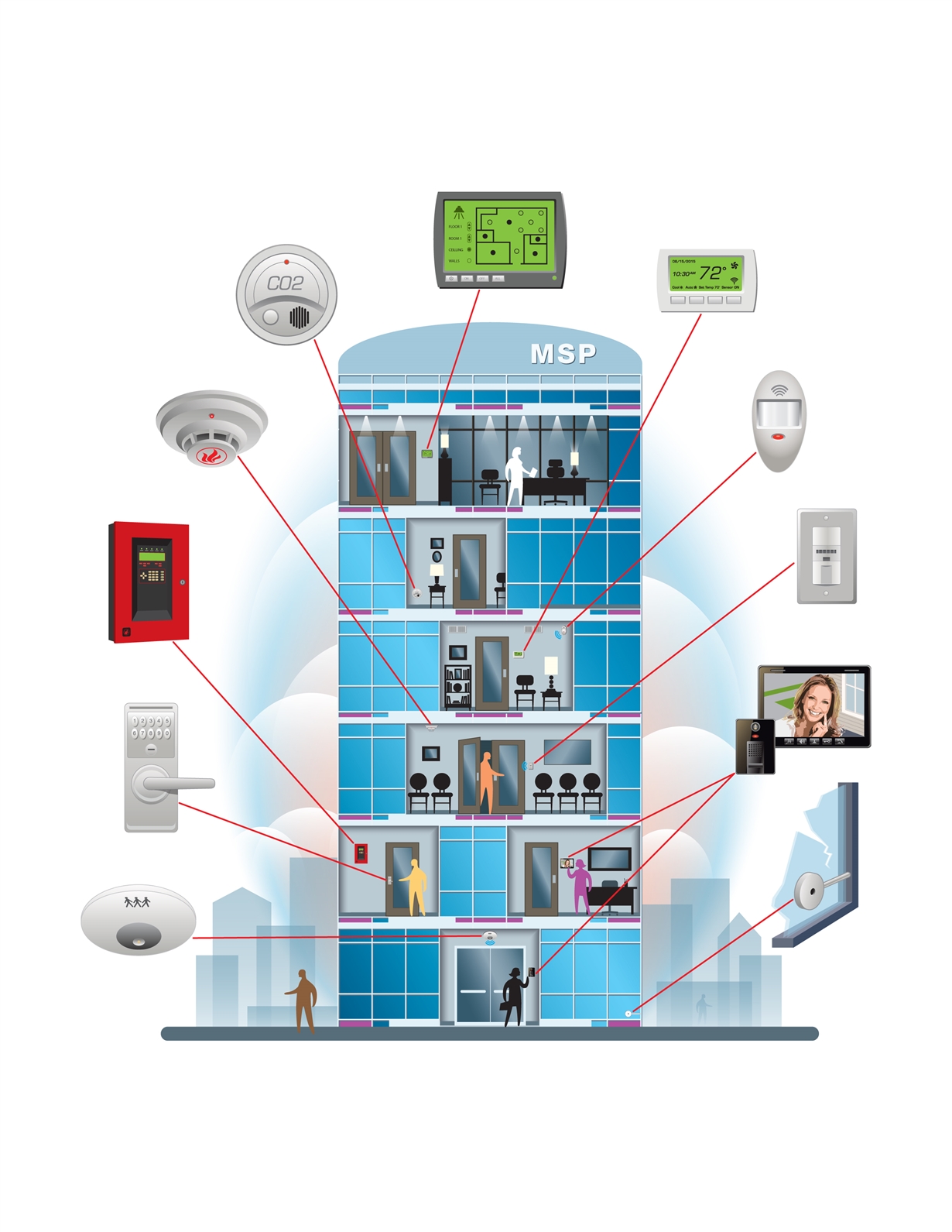SSZTC90 August 2015
- 1
-
2
- 3
- Low Power:
- Smart Analog Integration and Small Form-factor:
- Reference Software and Connectivity Protocols:
- Occupancy sensors and motion detectors
- What Benefits Do MSP MCUs Bring to Occupancy Sensor Applications?
- Electronic locks (e-locks)
- What Benefits Do MSP MCUs Bring to e-Lock Applications?
- A Glass breakage detector
Our low-power MSP microcontrollers are designed to address many of the challenges of developing building automation applications. TI’s MSP MCUs are low power, have a high degree of analog integration to enable small form factors and include reference software and industry-standard communication protocols. So, what do these benefits mean for your building automation designs?
Low Power:
With MSP MCUs you don’t need to compromise functionality or change batteries in building automation systems. By combining low-power design techniques with Energy Harvesting you can reduce or eliminate battery replacements in thousands of remote sensors; when you do have to replace batteries or if power is lost, your system state can then be maintained due to the speed and endurance of FRAM paired with our Compute Through Power Loss (CTPL) software utility. Essentially, your application can pick up right where it left off – no recalibration or hard restart required. Combined with the real-time power profiling capabilities of EnergyTrace™ technology, MSP microcontroller software can be optimized to squeeze every last nano-ampere out of your application.
Smart Analog Integration and Small Form-factor:
Ever wonder where TI got the product name for ‘MSP’? It actually stands for ‘mixed signal processor.’ One of our key objectives is integrating analog peripherals so you can reduce the complexity, size and cost of your building automation systems. Integrated high performance analog functions enable you to add local interface connectivity to, and sampling and processing from, multiple sensors in a building automation system.

Reference Software and Connectivity Protocols:
Whether adding wired or wireless connectivity to your building automation application – our MSP MCU hardware and software enables the device to serve as a host controller and interface seamlessly to multiple connectivity solutions. We also offer complete TI Design reference designs, wired and wireless stacks and algorithms, including our recently announced Control Through Power Loss (CTPL) and IQMathLib libraries, to speed development and reduce connectivity (RF) expertise required.
Let’s look at some popular building automation applications to see how low-power MSP MCUs address their design needs.
Occupancy sensors and motion detectors
are essentially sensing applications that encompass a range of technologies for detecting the presence of a human body in an area of space, typically without the intentional participation of the detected person. A variety of sensing technologies are used like infrared (IR), ultrasound, acoustic, image recognition and more in spaces like offices, classrooms, conference rooms, restrooms, storage areas or corridors. These sensors or detectors can be used to conserve and save electricity. It also helps in adding intelligence and data analytics to improve the safety and security aspects within the buildings.
What Benefits Do MSP MCUs Bring to Occupancy Sensor Applications?
- Low-power consumption for simpler power supplies
- Small form factor for size-constrained applications
- Integrated smart analog functionality for multiple sensor inputs (PIR, thermopile, inductive, ultrasonic, etc.). As an example, the 14-bit high-speed ADC on MSP432 MCUs can be used for advanced capture algorithms and improved performance
- AES256 and IP encapsulation for enhanced system security
- Non-volatile embedded FRAM for firmware upgrades and data logging
Multiple communication stacks available, from 6LoWPAN, SimpleLink™ , KNX and more.
Electronic locks (e-locks)
are a combination of a mechanical and electronic fastening device that is released by a physical object (such as a key, keycard or keypads via a combination of numbers, fingerprint, RFID card, security token, etc.), by supplying secret information or a combination. These products primarily help to improve security, ensuring valid access to certain areas.
What Benefits Do MSP MCUs Bring to e-Lock Applications?
- Ultra-low-power consumption for more than 10 years of battery life
- AES256 and IP encapsulation for enhanced security and IP protection
- Non-volatile embedded FRAM for firmware upgrades and data logging
- Multiple communication stacks available, including near field communication (NFC), 6LoWPAN, SimpleLink with Bluetooth® Low Energy (BLE) and Wi-Fi®, and more.
A Glass breakage detector
is a sensor that detects if a pane of glass is shattered or broken. This is used in applications such as electronic burglary alarms. Glass break detectors usually use a microphone to monitor noise or vibrations coming from the glass, if the vibrations exceed a certain threshold, they are analyzed by detector circuitry.
What benefits do MSP MCUs bring to glass-break detector applications?
- Ultra-lLow-power consumption for more than 10 years of battery life
- Reference design and software available with robust algorithms for false triggers or detection
- Higher security with AES256, regional secure zones for IP protection and firmware upgrades
- Low-power 14-bit high speed ADC for advance capture algorithms and improved performance
You can learn more about designing your building automation applications by reading the white paper by visiting the building automation applications page on TI.com.